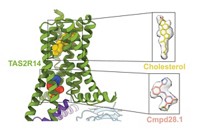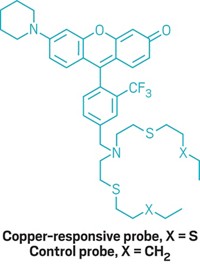Advertisement
Grab your lab coat. Let's get started
Welcome!
Welcome!
Create an account below to get 6 C&EN articles per month, receive newsletters and more - all free.
It seems this is your first time logging in online. Please enter the following information to continue.
As an ACS member you automatically get access to this site. All we need is few more details to create your reading experience.
Not you? Sign in with a different account.
Not you? Sign in with a different account.
ERROR 1
ERROR 1
ERROR 2
ERROR 2
ERROR 2
ERROR 2
ERROR 2
Password and Confirm password must match.
If you have an ACS member number, please enter it here so we can link this account to your membership. (optional)
ERROR 2
ACS values your privacy. By submitting your information, you are gaining access to C&EN and subscribing to our weekly newsletter. We use the information you provide to make your reading experience better, and we will never sell your data to third party members.
Environment
Metals’ Role In Odor Sensing
Neuroscience: Some olfaction receptors need the help of copper, research shows
by Lauren K. Wolf
February 8, 2012

The metal copper allows mice to detect some particularly stinky thiols and related compounds, according to a new report (Proc. Natl. Acad. USA, DOI: 10.1073/pnas.1111297109). The results put on firm ground long-held suspicions that metals might help humans and animals smell certain volatile chemicals and may force scientists to rethink traditional models of how ligands activate biological receptors.
Humans can smell some thiols, which have odors reminiscent of rotten eggs, at levels approaching 1 part per billion. Because of this extreme sensitivity, chemists have in the past proposed that metal ions somehow mediate the interaction between these odorants and protein receptors in the nose that send olfactory information to the brain. “They knew that chemicals that bind with metals smell stronger than those that don’t,” explains Hiroaki Matsunami, a neurobiologist at Duke University Medical Center and coauthor of the new study. “This made them think that metal coordination is important to the odor detection process.”
In 1978, for instance, Robert Crabtree of Yale University published a paper in the Journal of Inorganic & Nuclear Chemistry stating that copper(I), an ion present inside cells, has a high affinity for malodorous thiol compounds and that it is “the most likely candidate for a metallo-receptor site in olfaction” (1978, 40, 1453). In 2003, Kenneth S. Suslick of the University of Illinois, Urbana-Champaign, also suggested that metal ions would help thiols activate olfactory receptors embedded in cell membranes by binding to particular peptide sequences on their surfaces (Proc. Natl. Acad. USA, DOI: 10.1073/pnas.262792899).
Matsunami and coworkers confirmed these chemists’ suspicions by first screening for and identifying an olfactory receptor in mice, called MOR244-3, that is responsible for binding the volatile chemical (methylthio)methanethiol (MTMT). They then showed that MTMT and some of its analogs could not activate MOR244-3 in the absence of copper ion. MTMT is a compound that male mice excrete in the urine to signal females that they are fertile and in the vicinity, says Eric Block, a chemist at the University at Albany and a member of the research team.
On the basis of mutation and modeling studies, the researchers, who also included Hanyi Zhuang of China’s Shanghai Jiaotong University School of Medicine, believe that copper binds to MTMT and other odorant compounds before interacting with the receptor. They hypothesize that the copper alters the conformation of the odorant, enabling the whole complex to nestle snuggly into the receptor’s active site, switching the protein on.
Ever since scientists discovered that mice were extremely sensitive to MTMT, the question has been “how does the nose do it?” says Leslie B. Vosshall, a neuroscientist at the Rockefeller University, in New York City. “How can it possibly detect something that isn’t even a detectable peak on a gas chromatography-mass spectrometry instrument? This paper solves it in a big way.” The new results, she adds, will make scientists “rethink the whole process of ligand-receptor interaction.”
The finding, Albany’s Block says, opens the door to a “wonderful” area of research in which chemists can combine their talents with those of neurobiologists to better understand how olfactory protein receptors work. “If we can understand in detail how a single receptor works,” he says, that knowledge “may have implications for how drugs bind to similar receptors” in other parts of the body.
The next step, both Block and Matsunami say, is to see whether human receptors also need copper to sense thiols.






Join the conversation
Contact the reporter
Submit a Letter to the Editor for publication
Engage with us on Twitter